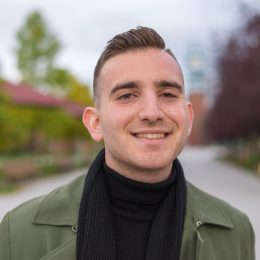
The holidays are here again — a time of cheer, celebration and giving. It’s the time of year when people flock to soup kitchens and do their best to support people in need by organizing food and clothing drives. We’re seeing it on our TV’s all the time — it’s the time to help the less fortunate.
I’m truly appreciative for people who choose to do this work. Kindness is a great thing. However, there’s something that’s never sat too well with me about this jump in charity support during the holidays. Brittany Magelssen writes in a UT Dallas Magazine article that volunteering usually increases by 50 percent around the holidays, though most adults don’t volunteer year-round. According to an article on Non Profit Easy, nonprofit volunteer retention rates in America are around 65 percent, but from my own experiences participating in community service initiatives, even when people volunteer more than just seasonally, so much of the time this volunteering doesn’t seem very dynamic. People often enter a community, offer help, then leave. It’s not that the help you give isn’t important — it definitely is — but there’s a way that we can transform our impact on others. A way to show the greatest of kindness — realizing that what we see in these communities isn’t, for a large majority of issues, just misfortune but also injustice. And it’s something we need more than kindness to solve.
One of the most fulfilling experiences I’ve had was working with the North of Main neighborhood association, or NoMa, on Binghamton’s West Side when I lived in Hinman College’s Public Service Learning Community. I’ll admit, I’m not the type of person who always goes to charity events or park cleanups. Instead, I’ve engaged in activism since I was in high school, volunteering for political campaigns and working to empower others through leadership roles. Change used to be my favorite word, but I wanted to focus my time in college more on learning and simply helping others around me rather than jumping to change right away. I fell in love with NoMa’s work almost instantly when I saw how they balanced giving back with change-making.
While they did a lot of traditional community service work like distributing food and clothes and holding after-school activities, they also secured grants to hire community members and advocated for affordable housing. NoMa and other local organizations have had great success, with the government recently pouring millions of dollars into new community developments (3). In an interview discussing the organization’s approach, founder Mary Webster said that ‘“When we started out with any kind of crime or safety issue … the road always led back to the people and social issues. We had to do more outreach — we had to involve people.”’
I wouldn’t say it was a very partisan organization at all, but no doubt about it, they made their work political, connecting issues to the policies that caused them to occur. They looked at what caused the inequalities that they worked to help people overcome. This has served as my model for effective, impactful community service since then.
The learning community pushed me to always be curious as I went and volunteered at NoMa. As I kept serving food, advertising events and talking to community members, I tried to ask people about their lives and the world they lived in. What got them to come to the community center? Where do they work? How is it like living there? I learned that I didn’t have to choose between community service and social change. In fact, not only could it be both, but there was a third, maybe even more powerful element, that I hadn’t considered before — learning.
We won’t change the world a couple hours a week, month or year at a time, but that doesn’t mean we should forget about change. By not just asking what is happening and how to help, but also taking the next step and trying to learn why it’s happening, we can do justice to our communities by addressing their injustices.
What would this look like?
You can let the issues you see firsthand influence how you vote — and if you vote — what policies you support and what ideas you agree with or challenge in your daily conversations. Maybe you hear someone say that poor people should just work harder and need less welfare support, and you think back to how you volunteered at a homeless shelter and learned about the stories of people who seemed like they did all they could but just couldn’t find a job no matter what. Maybe you see a protest for saving SNAP benefits and remember the conversations you had with people at a soup kitchen about how crucial having enough to eat was.
It’s important to also note that while this mindset change would make people who engage in community service into more impactful individuals, what would be even more transformational is if groups adopted this attitude. Specifically, large entities with the resources to make significant change in communities, like large corporations, universities and social organizations. Jessica Rodell writes in the Harvard Business Review that 47 percent of U.S. companies had community volunteer programs in 2018, and even more for large companies. Just like on the individual level, however, I think this caring and kindness should be used to interrogate and address root causes, especially when there are resources available to make significant impacts through policy advocacy.
You will undoubtedly make an important difference by choosing to give your time and kind actions to others in any way. Go and volunteer this holiday season — just don’t forget to keep an open mind. The truth is, if serving others, offering help and then leaving is all that so many people are doing, we’re missing out on our chance for social transformation.
Max Kurant is a senior double-majoring in English and an individualized major in social systems science.


